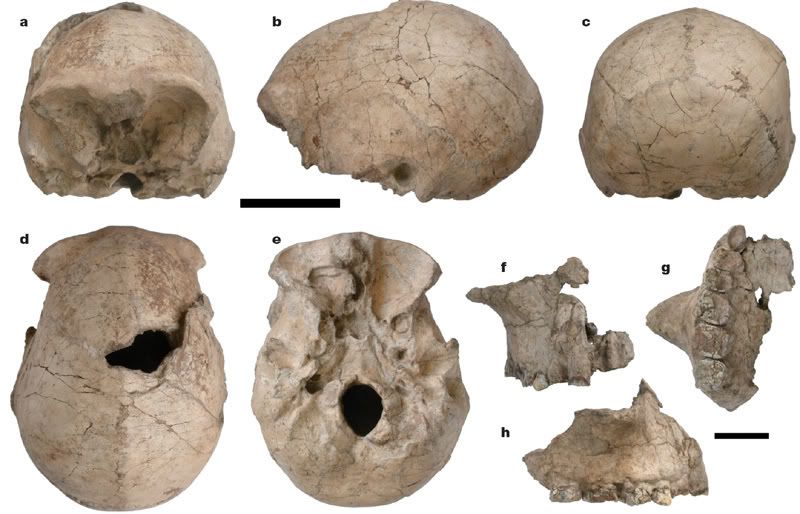Homo habilis and Homo erectus shared the family dinner table, but probably ordered different meals.
Two new fossil discoveries from Kenya described in the current issue of Nature show that Homo habilis and Homo erectus lived contemporaneously. According to today’s New York Times:
Scientists who dated and analyzed the specimens — a 1.44 million-year-old Homo habilis and a 1.55 million-year-old Homo erectus — said their findings challenged the conventional view that these species evolved one after the other. Instead, they apparently lived side by side in eastern Africa for almost half a million years.
The conventional view has been that Homo habilis was the ancestor of H. erectus and that there was a linear progression along that particular evolutionary branch.
This interpretation has always been suspect to me for, as a good student of evolution knows, linear and evolution rarely go hand in hand (and progression never). Evolutionary history is a complex branching tree without direction or purpose. This doesn’t imply randomness (please take note creationists), but rather demonstrates how organisms adapt to their local environments instead of progressing to some ultimate goal.
The fact that the two hominid species lived together in the same lake basin for so long and remained separate species, Dr. Meave Leakey said in a statement from Nairobi, “suggests that they had their own ecological niche, thus avoiding direct competition.” For example, the two may have had foraging and dietary differences.
In any case, Dr. Leakey said, “Their co-existence makes it unlikely that Homo erectus evolved from Homo habilis.”
What this could imply is sympatric speciation from a common ancestor, in which a subpopulation of early Homo adapted to a different ecological niche and remained reproductively isolated from the main population. The later descendants of these subpopulations became habilis and erectus. Another possibility is that a geographic barrier isolated these two subpopulations long enough for them to adapt along separate trajectories. Later, a million years later or so, when this barrier no longer existed the two species then interacted but were distinct enough from each other that they didn’t compete over the same resources.
The new findings, Dr. Lieberman said, highlight the need for obtaining more fossils that are more than two million years old. In addition, he said, they show “just how interesting and complex the human genus was and how poorly we understand the transition from being something much more apelike to something more humanlike.”
How long do you think it will take before the Creationist/Intelligent Design crowd jumps on this story to claim they were right all along?
Have you made your guess? For the answer click here to see if you were right.
UPDATE: For an excellent review (and critique) of this Nature article see Anthropology.net
Reference:
F. Spoor, M. G. Leakey, P. N. Gathogo, F. H. Brown, S. C. Antón, I. McDougall, C. Kiarie, F. K. Manthi & L. N. Leakey (2007). Implications of new early Homo fossils from Ileret, east of Lake Turkana, Kenya. Nature 448: 688-691.


















1 comment:
Meave Leakey is naive to make such a statement. Broom and Robinson, at Swartkrans in 1949, showed the co-existence of two hominin species. Indeed, the Leakey family verified this at Olduvai Gorge, with more co-existent hominins.
Just as there are mammalian descendants of reptiles, and still there are reptiles, there are parent and daughter species that coexist. That is the essence of biodiversity.
Post a Comment